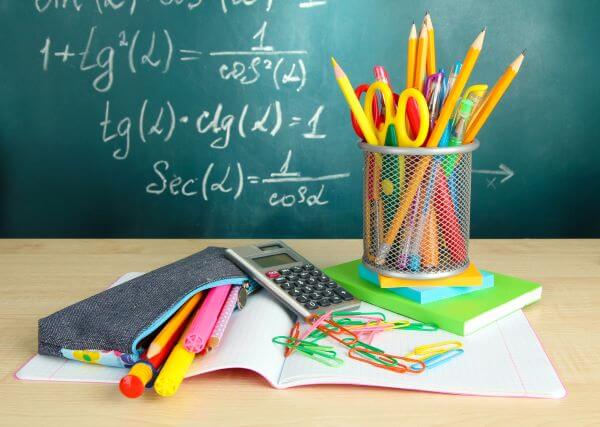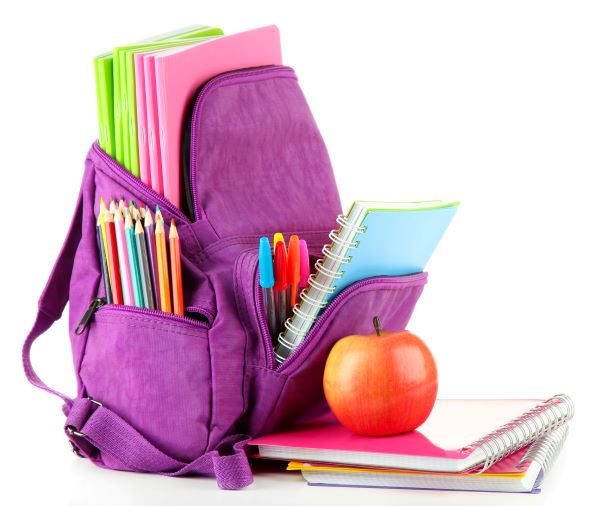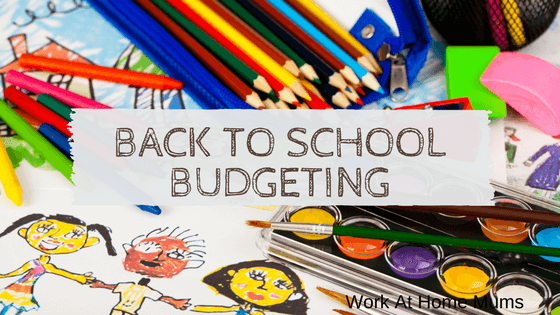It’s school holiday time! And while your kids enjoy time away from school, it will be gone before you know it which leads to the other problem parents face during school holidays…. back to school shopping.
Back to school time can cost a fortune. And if you’re not prepared financially, it can be a stressful time for parents trying to find some extra cash to pay for all your kids supplies.
To help stop you going into shock at the cost of school uniforms, here’s our top tips for for back to school budgeting. Plan ahead now and you wont need to find as much money at the start of the school year.
15 Tips for your back to school budgeting
1. Make a list of expenses
The best back to school budgeting tip is figuring out how much money you need. Know exactly what you are going to need to spend throughout the year by making a list of all the expenses. Think about the staples like school fees, uniforms (summer, winter and sport), shoes, stationary and books. But also put in the less obvious like school camps and excursions, music lessons, sports activities and any technology you will need like computers and internet. By having a list, you will be able to figure out the amount you need to budget for during the school year. Once you know how much you need you may even consider putting some away each pay so you’re not trying to find money when it’s needed. Which leads me to our next tip.
2. Have a school fund
The beginning of the school year can cost a lot of money. Open a no fee bank account or savings account and deposit $10, $20 or even $50 per pay into this account. At the end of the year, you will have an amount that can be used towards, uniforms, books, stationary or even school fees. Work out what it cost you throughout the year for all these things and then the next year you can budget to put enough in there to cover everything. No more starting school stress as you’ve spread the amount throughout the year.
3. Buy vouchers throughout the year
One thing that can add up quite quickly is stationary. A good way to combat that one off expense is to buy gift vouchers during your grocery shopping. Add a $10 or $20 voucher onto your shop and then put it into a “school box”. At the beginning of the school year you will find you can have up to a few hundred dollars to spend on school supplies and will have spread the cost through the year instead of you needing to find money for stationary at the same time you are trying to find money for uniforms and books.
Another way to do this is to add some stationary into your trolley during the shop and then add it to your “school box”. Things like pens, pencils, exercise books etc are great things to chuck in when they are on special. Again, it will spread the cost throughout the year, but make sure you regularly check the school box to see what you have bought or you may end up with 50 exercise books, 7 pairs of scissors and no pencils.
So start now and you will find that come January you might have a nice stash of vouchers or products that will save you a lot of stress.
4. Check your house for supplies
Chances are you have a lot of stationary already lying around the house. Check cupboards, desks, craft boxes etc. You will probably find you have a lot of stuff already on the list without needing to spend anything. Look and see what the kids have leftover from last year. They don’t always use everything on their stationary list and you may already have some things you need.

5. Get your kids to try on their clothes
Don’t just presume your kids have grown and you need to buy everything again. Get them to try on everything and see what still fits. This way you can save a bit of money by only buying what you need to right now.
6. Don’t take the kids
This may seem simple but it’s effective. If you’ve ever taken your kids shopping you probably end up with something you weren’t meaning to buy. Try and do the back to school shopping (at least for the boring stuff like stationary that they don’t need to try on) without your kids. This will mean it will probably get done a lot quicker, but you will also be able to stick with what they need and not have the added pestering of getting the more expensive products that have trolls or princesses or whatever the latest trends are.
7. Look for sales
This may seem like an obvious one but a lot of stores have back to school sales. Why pay full price for something when you can time it right and get some savings. Look through catalogues and try and take note of when stuff is on special. Do a bit of an online comparison as you may even find it cheaper again.
8. Price Match
Many retailers now offer to match their competitor’s prices,If an item on your list is on sale at a store that’s too far out of your way, look for a more convenient, competitor store that will be happy to match the offer.
9. Buy some things later
If your child’s list asks for 4 glue sticks, you know they don’t need them all at once. Work out what you need for the current term and buy the rest next term or when your child runs out.
10. Buy second hand
Books and uniforms are things that quite often don’t need to be bought brand new. Especially in primary school, when kids grow so quickly, uniform costs can add up! The beauty of kids growing quickly is that they haven’t had time to wear stuff, so you may find some second hand clothes in great condition for a cheaper price. Check if your kids school has a second hand section in their uniform shop or if they don’t, look for buy/sell/swap Facebook pages in your schools area as great places to start searching for uniforms. Can’t find anything? Start your own page, inviting parents from the school to buy and sell uniforms. I’m sure you’re not the only parent who would appreciate a place to connect with others and buy well loved uniforms and books, or sell theirs on.
11. Label everything!
How much stuff do you have to re-purchase over the year because it’s gotten lost? Label, label, label! Put your child’s name on everything. It may not stop them loosing it, but it might mean you get a large proportion of it back when they do. And that can save a lot of money.
It doesn’t have to be fancy expensive labels either. A laundry marker will do the trick just as well.

12. Don’t buy licenced stuff
I know your child would probably love to have all of the stuff that has their latest favourite movie or TV show character on it. However I can guarantee that those products are a lot more expensive than the same product that doesn’t have a character on it. Unfortunately, there is also a much greater chance of that lovely expensive character product ending up in another child’s bag (due to envy more than malice). Sometimes it better (and cheaper) to just go plain. You can still buy a few select favourites for use at home.
13. Buy in bulk
Buying in bulk is generally always cheaper than buying one or two. If you don’t have space to store stuff, or the spare cash to pay more first to save more in the long run, do you know a few parents who would be interested in splitting costs?
14. Think reusable
Buy reusable containers for lunches and snacks. It can save you heaps over the year by doing away with plastic bags for sandwiches etc. and you’ll feel good about not contributing to landfill as well.
15. Things you shouldn’t scrimp on
Although there are many ways to budget and save money, there are some things that you shouldn’t just go for the cheapest option. Things like backpacks and shoes. It may be tempting to buy the cheapest you can get but is it still going to be the cheapest after you’ve had to buy new ones each term because they’ve split or broken? Make sure stuff that is going to get used the most and treated the roughest is good quality.
The start of a school year can be a lot of stress to get everything ready. Back to school budgeting takes effort, but a bit of planning during the year can mean that financial strain is not added to that stress.






